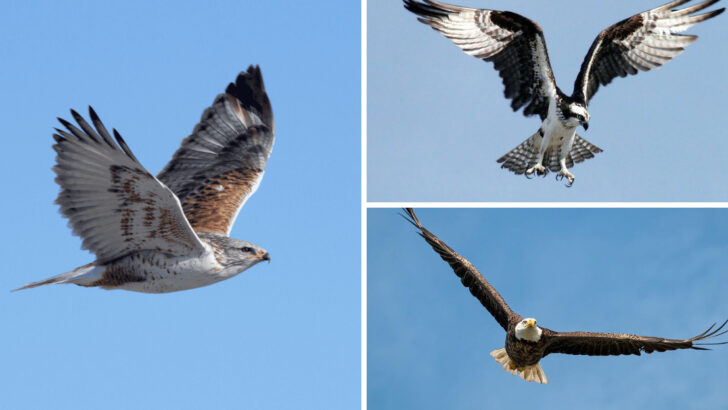Some birds don’t just fly—they soar, conquering the skies with effortless grace and astonishing altitude. These feathered daredevils push the limits of what seems possible, riding the wind higher than most planes fly.
From the mighty bald eagle to the elusive whooper swan, the sky is their domain. Some use their incredible height to spot prey from miles away, while others simply enjoy the thrill of gliding where few creatures dare to go.
If you’ve ever looked up and wondered just how high a bird can go, you’re in for a surprise. Some of these aerial masters reach heights that will leave you dizzy just thinking about it!
Get ready to meet the 21 highest-flying birds in America—creatures that prove the sky is far from the limit!
Bald Eagle
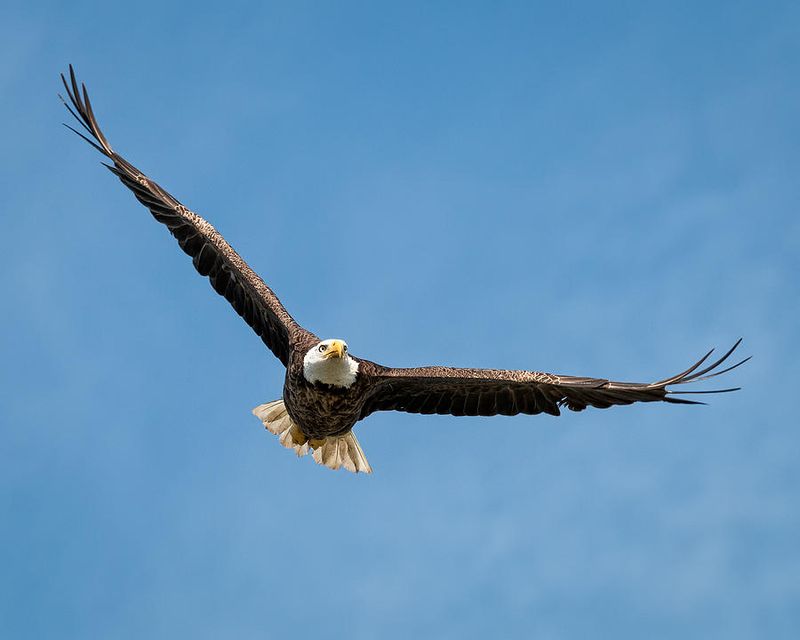
The Bald Eagle, a symbol of freedom, is one of the highest flying birds in America. With its impressive wingspan of up to 8 feet, it soars effortlessly at altitudes of 10,000 feet. This bird’s keen eyesight enables it to spot prey from great distances.
Known for its distinctive white head and tail, the Bald Eagle is often seen near large bodies of open water with abundant fish. Its powerful talons make it a skilled hunter. Families of Bald Eagles nest in tall trees, often reusing the same nest for many years.
Admired for its strength and grace, the Bald Eagle embodies the spirit of the wild.
Golden Eagle
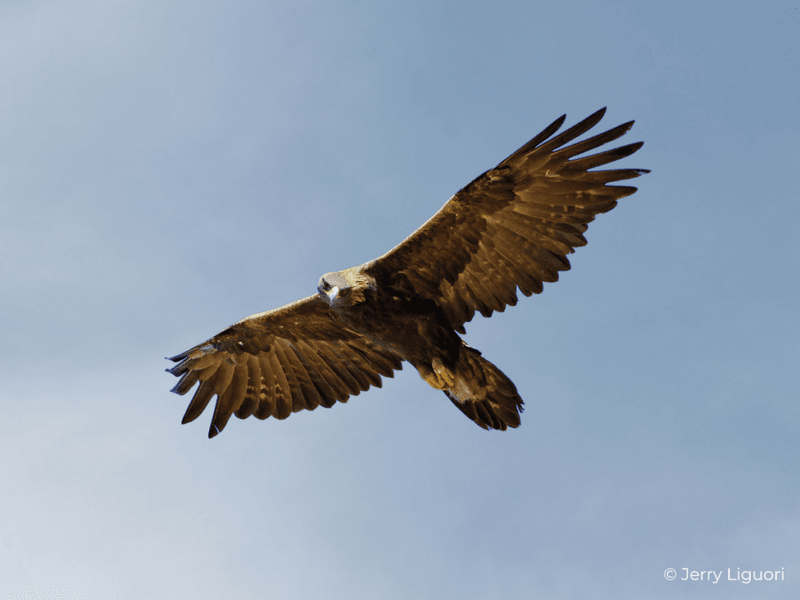
The Golden Eagle is renowned for its powerful flights over rugged terrain. With a wingspan of about 7 feet, it can reach altitudes of up to 15,000 feet. This bird of prey is an expert hunter, targeting mammals like rabbits and squirrels.
Found in open and semi-open areas, the Golden Eagle favors habitats that offer ample hunting opportunities. Its golden-brown plumage and piercing eyes make it a sight to behold.
The Golden Eagle’s agility in the air is unmatched, making it a revered bird among falconers and wildlife enthusiasts alike.
California Condor
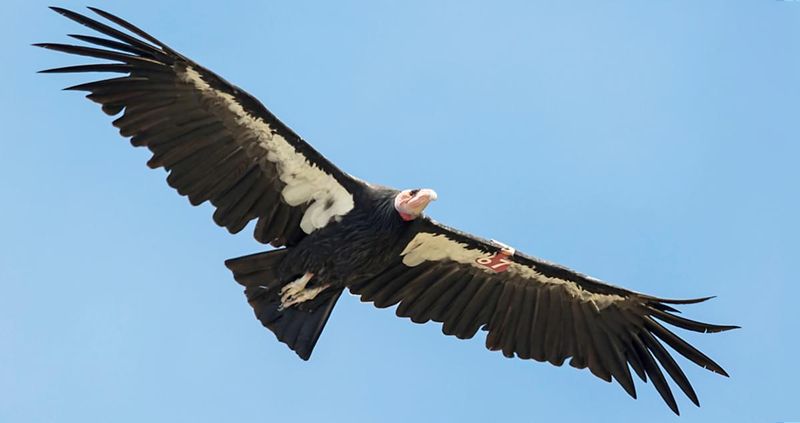
The California Condor holds the title for the largest flying bird in North America. With its colossal wingspan reaching up to 9.5 feet, it soars at altitudes over 15,000 feet. This scavenger plays a vital role in the ecosystem by feeding on carrion.
Once on the brink of extinction, conservation efforts have helped this majestic bird make a comeback. The California Condor’s striking black and white plumage makes it easily recognizable as it soars across the western skies.
Its ability to glide for miles without flapping wings is a testament to its mastery of the air.
Turkey Vulture
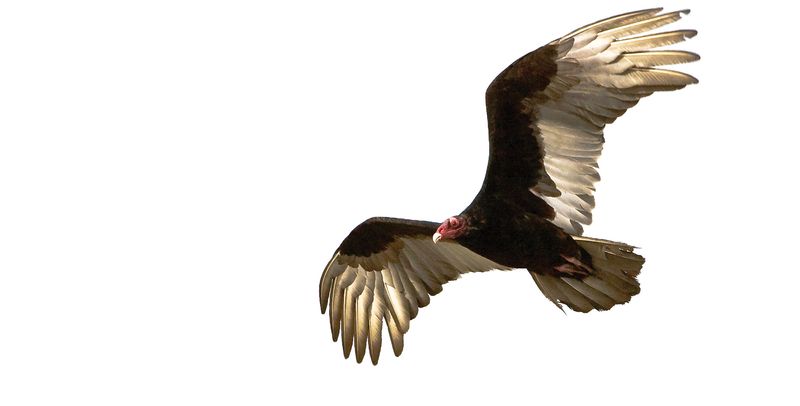
The Turkey Vulture is a common sight soaring high in the sky. Known for its distinctive red head and dark plumage, it can fly at altitudes up to 20,000 feet. This scavenger has an extraordinary sense of smell, allowing it to locate carrion from the air.
Turkey Vultures have a unique flying style, often seen gliding in circles as they ride thermal updrafts. They play a crucial role in the ecosystem by cleaning up carcasses.
Despite their somewhat sinister appearance, Turkey Vultures are gentle creatures that help maintain nature’s balance.
Red-tailed Hawk
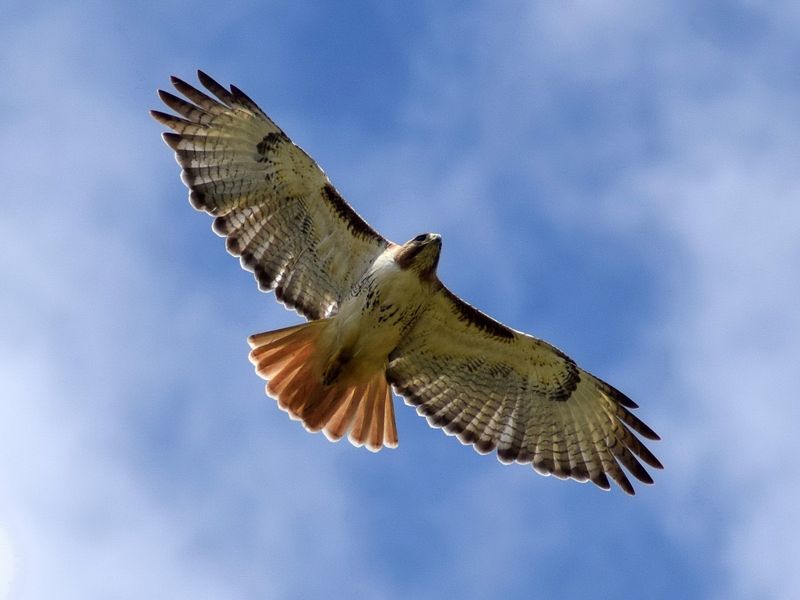
The Red-tailed Hawk is one of the most common and adaptable raptors in America. With a wingspan of about 4 feet, it can reach heights of up to 5,000 feet. This bird is known for its broad wings and distinctive red tail.
Red-tailed Hawks are often spotted perched on roadside poles or soaring over open fields. They have a keen sense of sight, which they use to hunt small mammals and birds.
Their characteristic screech is often heard echoing across the countryside, making the Red-tailed Hawk a familiar presence in many regions.
Swainson’s Hawk
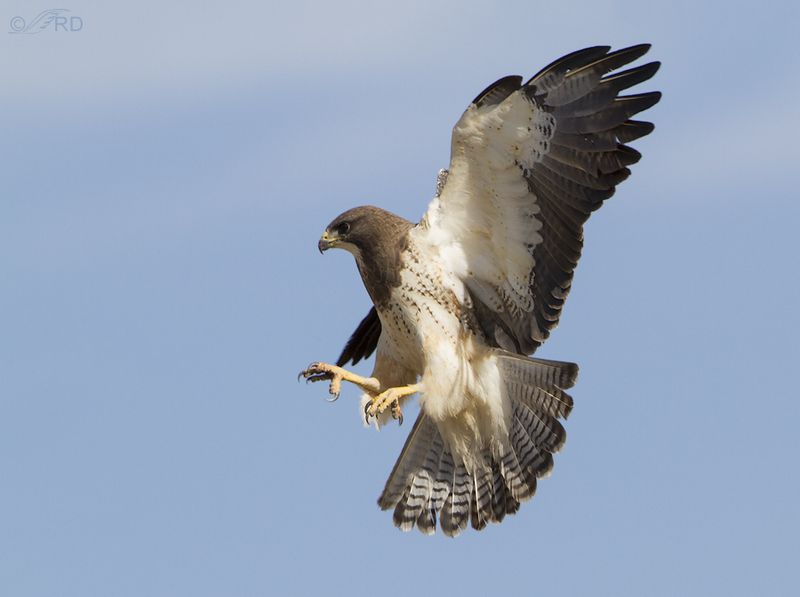
Swainson’s Hawk is a migratory raptor known for its long-distance travels. With a wingspan of up to 4.5 feet, it can fly at altitudes of 5,000 feet or more. This hawk is recognized by its dark bib and light-colored belly.
Found primarily in open grasslands, Swainson’s Hawks feed on insects and small mammals. During migration, they gather in large groups, creating spectacular aerial displays.
Their adaptability to different environments makes them a successful species, and their presence is a sign of healthy ecosystems.
Peregrine Falcon

The Peregrine Falcon is the fastest animal on the planet, reaching speeds of over 240 mph during its hunting stoop. With a wingspan of around 3.5 feet, it can fly at altitudes exceeding 10,000 feet.
Known for its blue-grey plumage and distinct facial markings, the Peregrine Falcon is a master of the skies. It often nests on tall cliffs or skyscrapers, taking advantage of high vantage points.
Its incredible speed and agility make it a formidable predator, capable of taking down birds in mid-flight with precision and power.
Snowy Owl
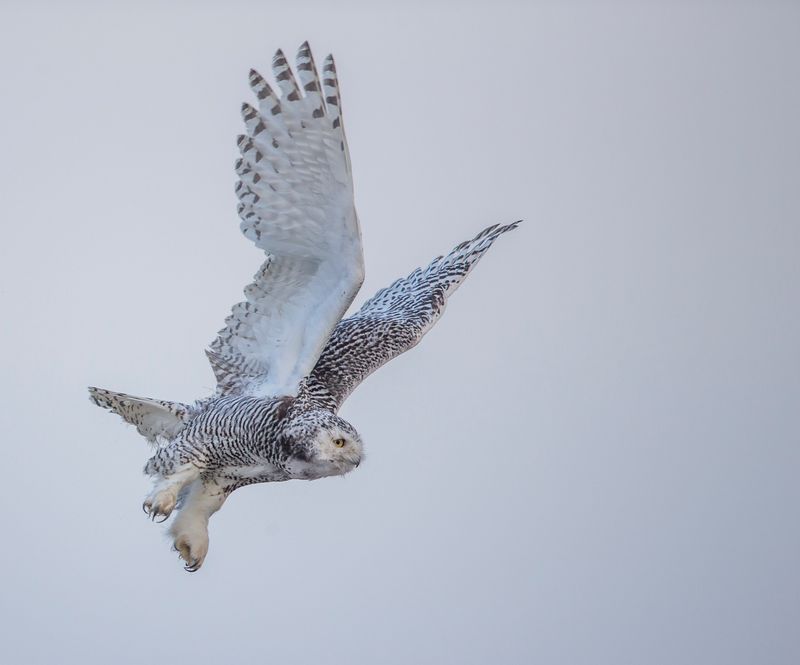
The Snowy Owl is a captivating bird known for its striking white plumage and piercing yellow eyes. This Arctic native can fly at altitudes up to 3,000 feet, often seen gliding silently over snowy landscapes.
Snowy Owls are highly adaptable, hunting both day and night. They primarily feed on lemmings and other small mammals. During the winter, they migrate south to open areas like fields and coastlines.
Their silent flight and regal appearance make the Snowy Owl a favorite among bird enthusiasts and photographers alike.
Black Vulture
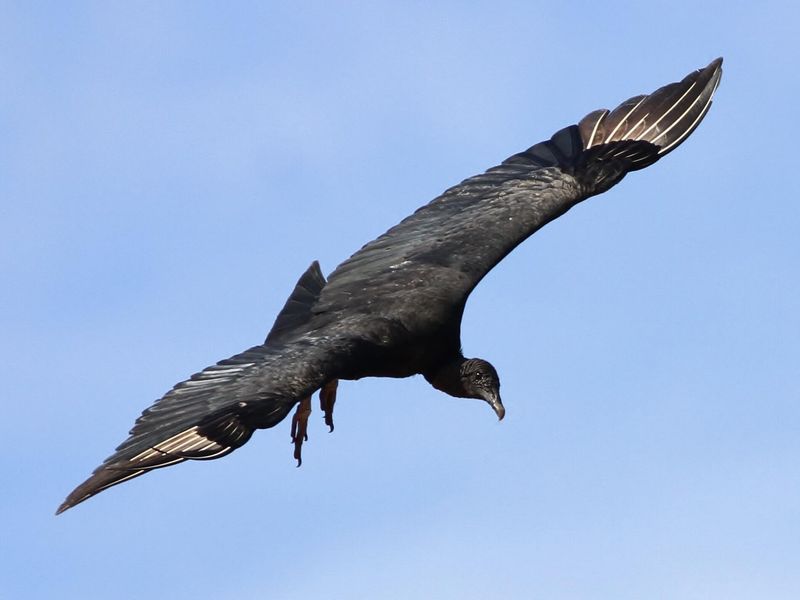
The Black Vulture is a skilled scavenger, flying at heights of 10,000 feet or more. Known for its black plumage and short tail, it often soars in groups, riding thermal currents.
These vultures are highly social and can often be seen in flocks, circling over potential food sources. They rely on their keen eyesight to locate carrion and play a vital role in the ecosystem by cleaning up dead animals.
Black Vultures are a common sight in the southeastern United States, their communal nature making them fascinating to observe.
Osprey
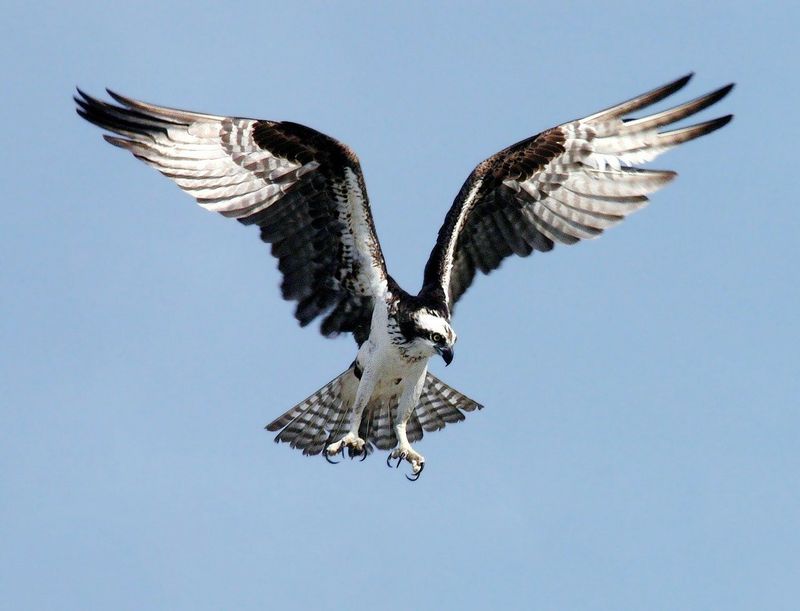
The Osprey, also known as the sea hawk, is a remarkable bird of prey often found near water bodies. With a wingspan of up to 6 feet, it can soar at altitudes of 10,000 feet.
Ospreys are expert fish hunters, diving feet-first to catch their prey. Their reversible outer toes and gripping pads help them secure slippery fish. Nests are typically built near water, using sticks and branches.
The Osprey’s distinct black and white markings make it easily identifiable. Its presence is often a sign of a healthy aquatic ecosystem.
Northern Harrier
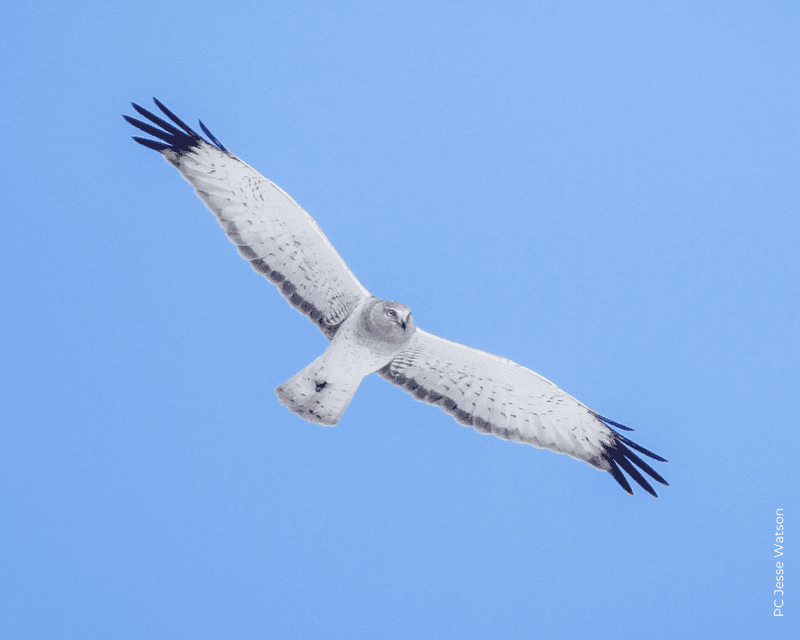
The Northern Harrier is easily recognizable by its unique flying style, gliding low over fields and marshes. With a wingspan of about 4 feet, it can reach altitudes of 3,000 feet.
This hawk is known for its owl-like face and keen hearing, which it uses to locate prey in dense vegetation. Northern Harriers often nest on the ground, preferring open habitats.
Their graceful flight and distinctive hunting techniques make them a fascinating species to observe in the wild.
American Kestrel
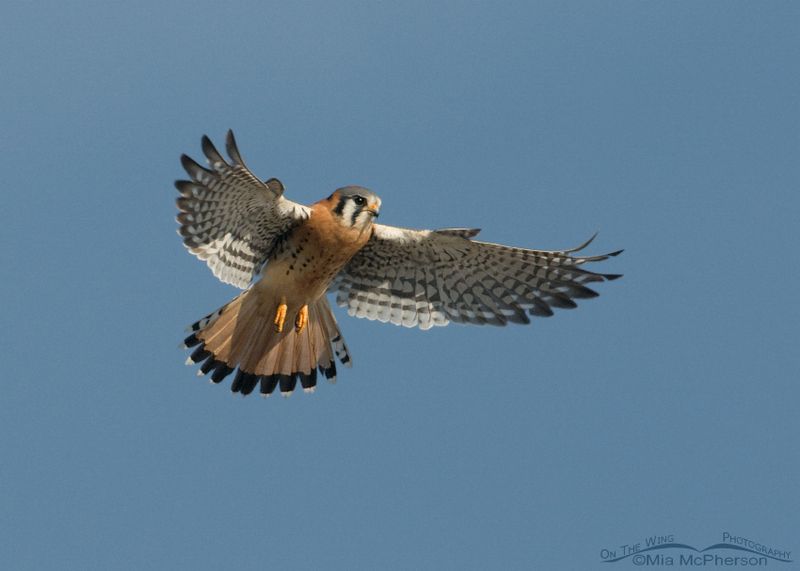
The American Kestrel, also known as the sparrow hawk, is the smallest falcon in North America. With a wingspan of about 2 feet, it can fly at altitudes of 1,000 feet or more.
Known for its vibrant plumage and distinctive face markings, the American Kestrel is a skilled hunter, preying on insects and small rodents. It often hovers in place while searching for food, a unique behavior among raptors.
Found in a variety of habitats, from grasslands to urban areas, the American Kestrel is a versatile and charming bird.
Great Horned Owl
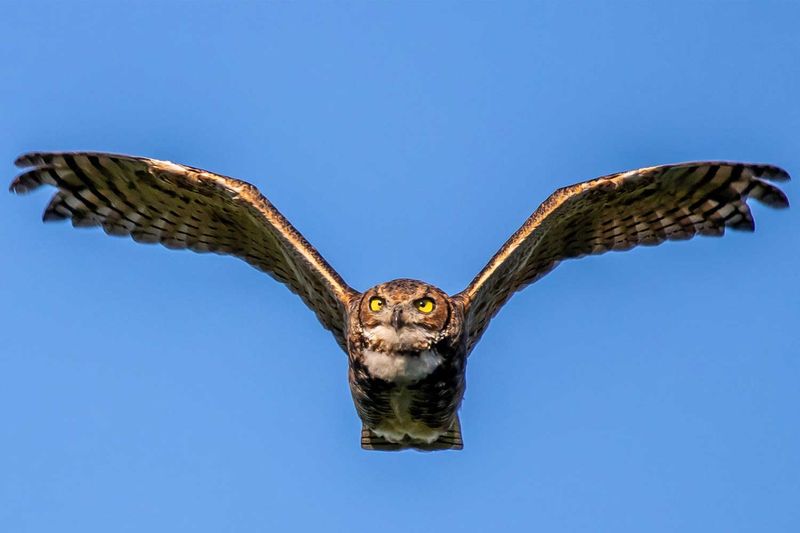
The Great Horned Owl is a powerful and adaptable predator. With a wingspan of up to 5 feet, it can fly at altitudes of 2,000 feet. Known for its distinctive ear tufts and yellow eyes, this owl is a master of the night sky.
It preys on various animals, from rodents to larger mammals, using its silent flight and exceptional hearing. Great Horned Owls are found in diverse habitats, including forests, deserts, and urban areas.
Their eerie hoots are a familiar sound in the wilderness, adding to their mystique and allure.
Red-shouldered Hawk

The Red-shouldered Hawk is a striking bird of prey, easily recognized by its reddish shoulders and banded tail. With a wingspan of about 3.5 feet, it can reach heights of up to 3,500 feet.
Found in wooded areas and near water, these hawks have a varied diet, including small mammals, amphibians, and reptiles. Their distinctive call is often heard echoing through the forests.
Red-shouldered Hawks are known for their territorial behavior, often returning to the same nesting sites year after year.
Broad-winged Hawk
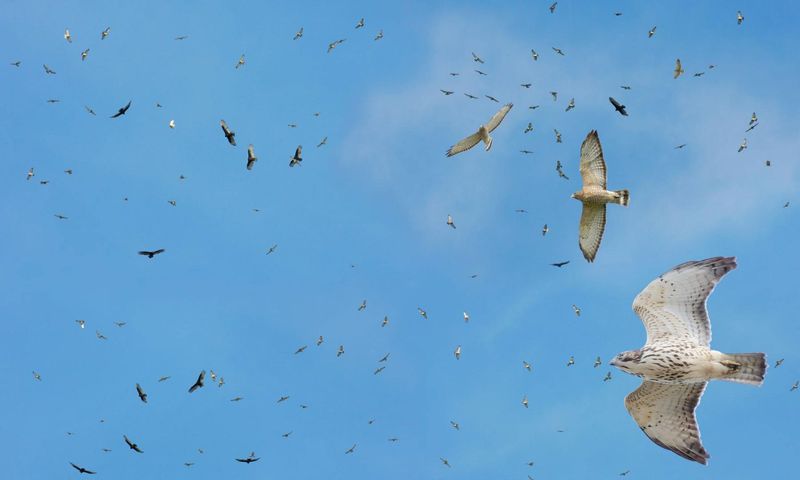
The Broad-winged Hawk is a migratory raptor known for its long-distance travel. With a wingspan of about 3 feet, it can soar up to 4,500 feet. Its short, broad wings and banded tail are distinctive features.
These hawks are often seen in large flocks during migration, creating spectacular aerial displays known as “kettles.” They feed on small mammals, birds, and amphibians.
Found in forests and woodlands, Broad-winged Hawks are a testament to the wonders of avian migration and the changing seasons.
Ferruginous Hawk
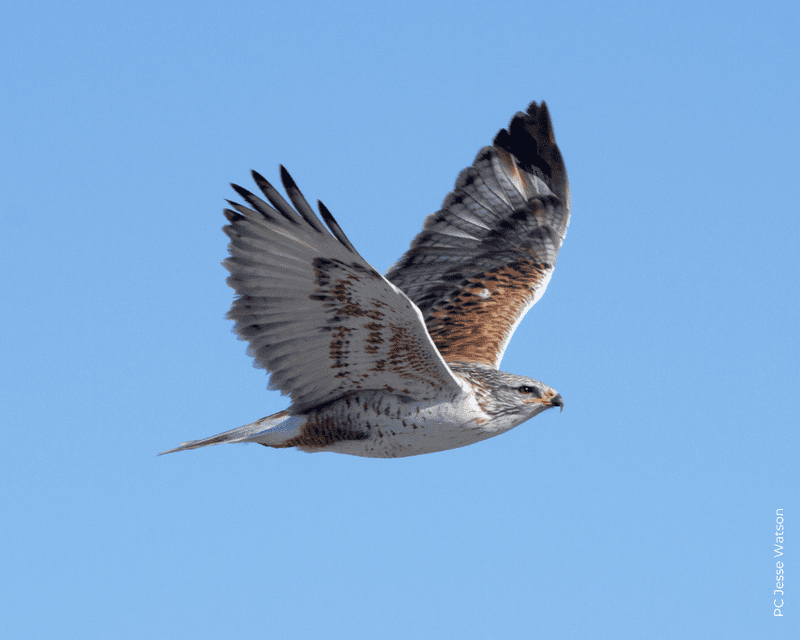
The Ferruginous Hawk is the largest of the North American hawks, with a wingspan of up to 5 feet. Known for its rust-colored plumage, it can fly at altitudes of 4,000 feet.
This hawk prefers open plains and prairies, hunting small mammals like rabbits and prairie dogs. Its powerful build and broad wings make it an adept hunter.
Ferruginous Hawks are less common than other raptors, but their striking appearance and impressive flight make them a sought-after species for birdwatchers.
Rough-legged Hawk
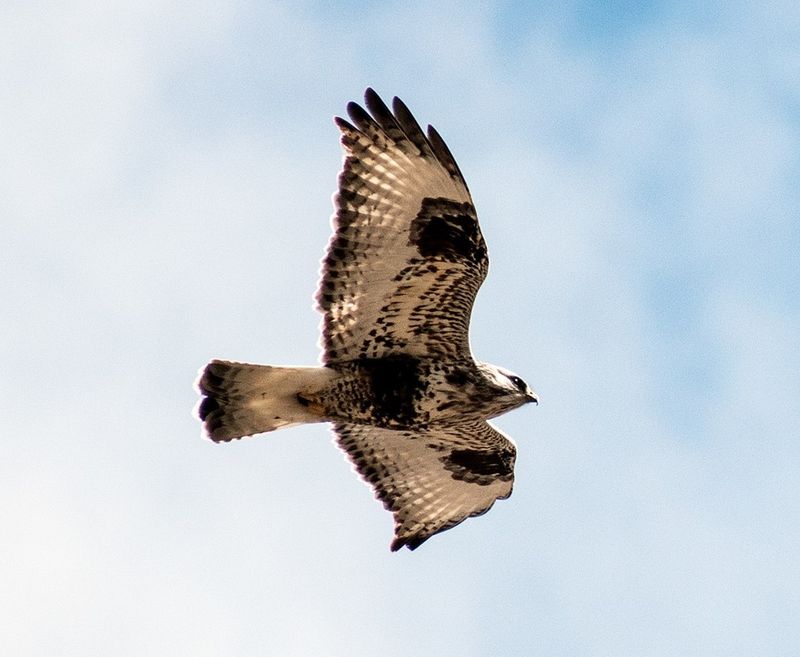
The Rough-legged Hawk is a winter visitor to North America, known for its feathered legs that provide insulation against the cold. With a wingspan of up to 4.5 feet, it can soar at altitudes of 3,000 feet.
This hawk is often seen hovering over open fields and tundra, searching for small mammals. Its plumage varies from light to dark phases, with distinctive markings.
Rough-legged Hawks are a symbol of the changing seasons, migrating south in winter and returning to their Arctic breeding grounds in summer.
Short-eared Owl
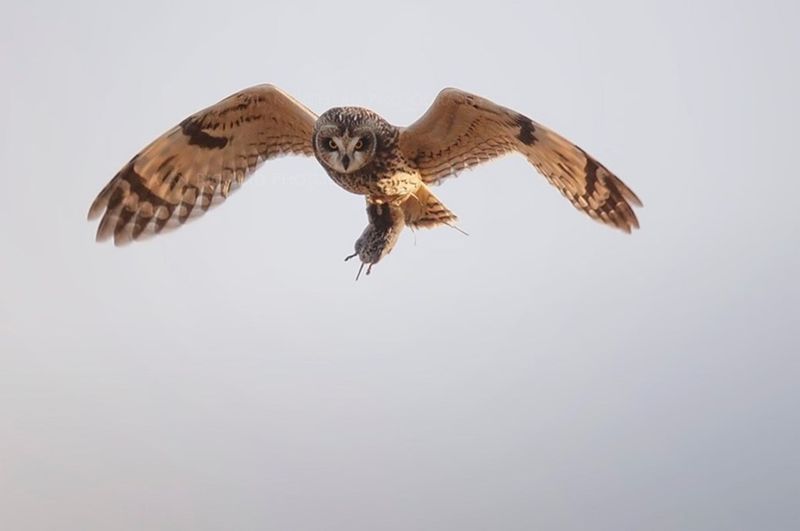
The Short-eared Owl is a ground-nesting bird often seen flying low over open fields and grasslands. With a wingspan of about 3.5 feet, it can reach altitudes of 1,500 feet.
This owl is known for its distinctive round face and short “ear” tufts. It hunts during dusk and dawn, preying on small mammals and birds.
Short-eared Owls are highly nomadic, following prey populations across vast distances, making them a dynamic and intriguing species to observe.
Barn Owl
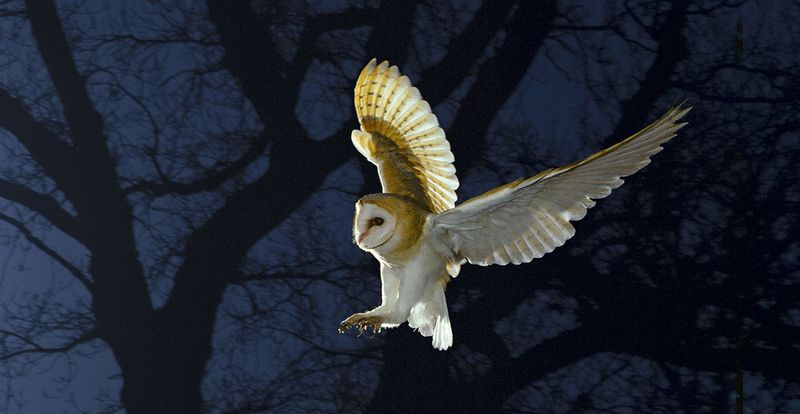
The Barn Owl is a ghostly figure of the night, known for its heart-shaped face and silent flight. With a wingspan of about 3.5 feet, it can fly at altitudes of 2,000 feet.
This nocturnal hunter preys on small mammals, using its exceptional hearing to locate prey in complete darkness. Barn Owls are found in a variety of habitats, including farmland and urban areas.
Their eerie screeches and ghostly appearance have made them a subject of folklore and fascination across cultures.
Cooper’s Hawk
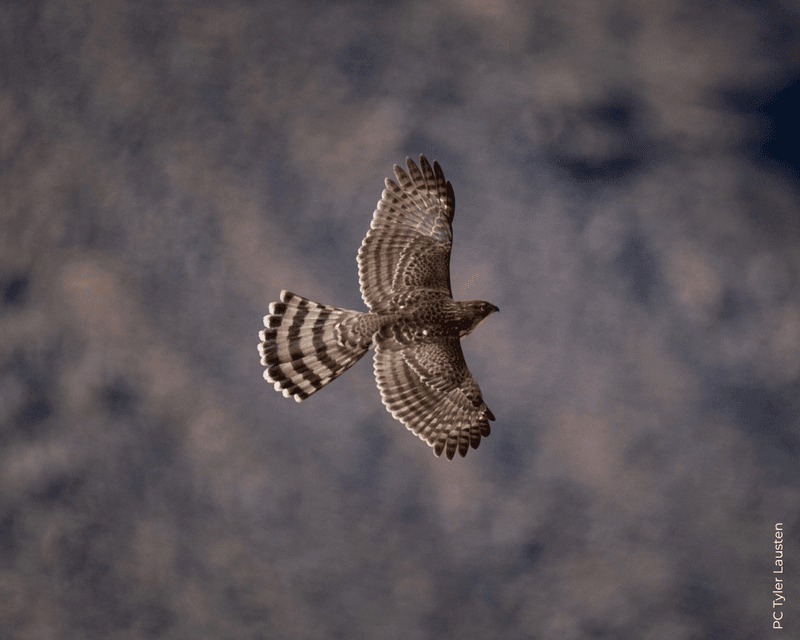
The Cooper’s Hawk is a skillful and agile predator, known for its ability to navigate through dense woodlands at high speeds. With a wingspan of about 3 feet, it can reach altitudes of 2,500 feet.
This hawk preys primarily on birds, using surprise and swift pursuit to capture its quarry. Its rounded wings and long tail provide exceptional maneuverability.
Found in forests and suburban areas, Cooper’s Hawks are a testament to adaptability and skill in the avian world.
Laysan Albatross
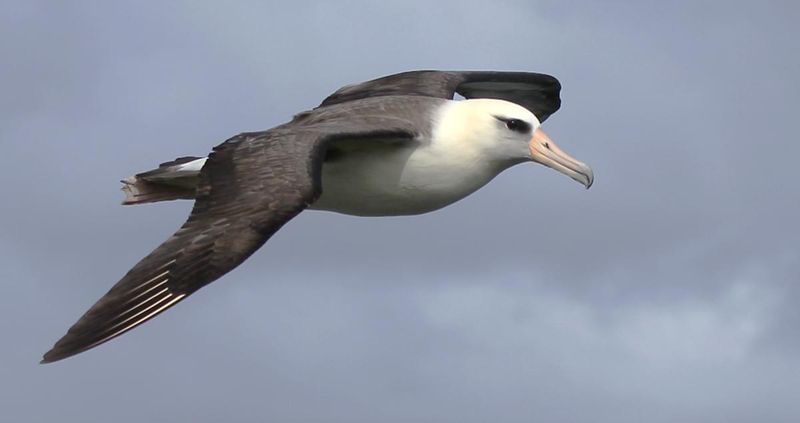
The Laysan Albatross is a remarkable bird known for its incredible wingspan and ability to fly great distances. Found primarily in the Pacific Ocean, this bird spends most of its life soaring above the water, only coming to land to breed.
Its long, narrow wings are perfectly adapted for dynamic soaring, allowing it to glide effortlessly over the waves. The Laysan Albatross can reach altitudes that are as breathtaking as its long migratory journeys.
While it is not the highest flying bird, its ability to cover extensive ranges and stay airborne for long periods is noteworthy, making it a fascinating subject for bird enthusiasts.

